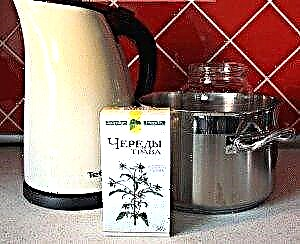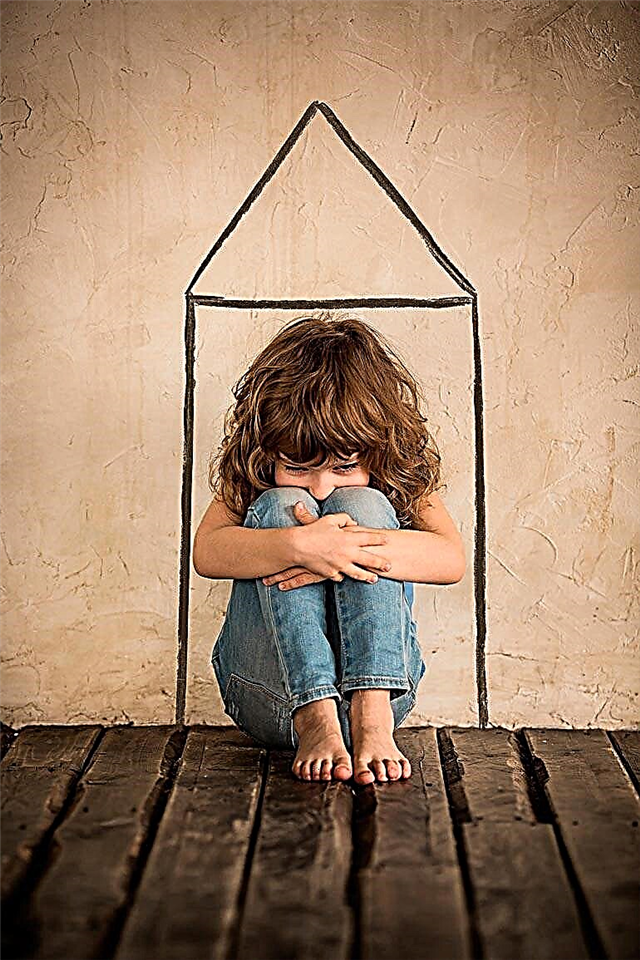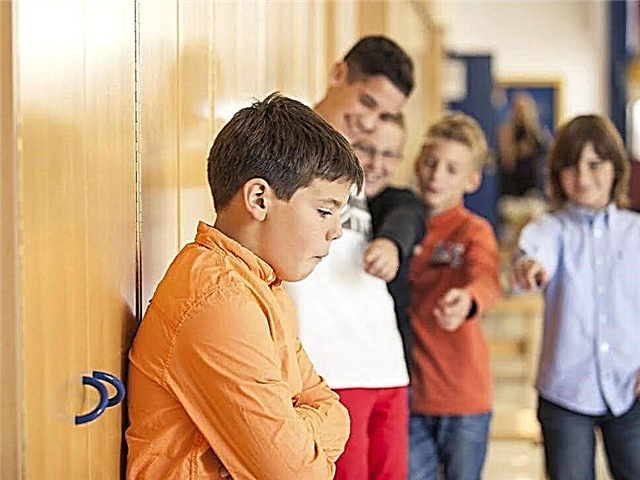
Teaching a child is a complex process, so the availability of additional tools and techniques is an excellent help to get a good result. The process of mastering speech does not present significant difficulties, since it is accumulated daily in the process of the child's growth and development, but learning to count is the next stage, which will require didactic techniques. The most convenient and proven method of working with children using Kuisener sticks, which is easy to master, knowing the basic laws of the process.


Characteristic
Kuisener's counting sticks have been known for a long time and are still popular due to the effectiveness of this technique.
Thanks to the Belgian scientist George Kuisener, a set of counting sticks was created, with which it was possible to easily develop mathematical abilities in children.
The advantages of this technique include full intellectual development of the baby, which has a positive effect on all his other skills and abilities.
Cuisener sticks can be used from the age of two and use them up to the age of nine.
The set contains 116 sticks, numbers and numbers from one to twenty and mathematical signs.
A feature of this set is that the sticks in it differ in size and color, which allows you to quickly associate the desired number with a specific color:
- the first is the smallest stick and its color is white;
- the second largest stick is pink;
- the third largest stick is blue;
- the fourth stick is red;
- the fifth stick is yellow;
- the sixth is purple;
- the seventh largest is black;
- eighth - burgundy;
- the ninth is blue;
- the largest stick is colored orange.
The presence of a large number of components allows you to use different games and schemes for children of different ages. Modern didactic systems offer games for preschoolers, primary and secondary school children.
With the help of Kuisener sticks, it is possible to speed up the process of learning mathematics and make classes more interesting and varied.

History of the technique
The appearance of Kuisener's sticks is associated with the works of George Kuisener, who was puzzled by the problem of teaching children the basics of mathematics. The biography of this Belgian teacher, who lived from 1891 to 1976, boils down to the fact that most of his life he worked with elementary school students and taught them mathematics.


Problems with the development of this science by schoolchildren aroused his interest and gave rise to a desire to help children and make learning easy and interesting. Through studying the problem, George Kuisener was able to understand that children learn much faster if they have the ability to visualize objects and perform computational actions directly with them.
In addition to visualization, the methodology is based on the principle of play, which allows you to work with children in a light and relaxed atmosphere, maintaining a stable interest in learning.
In order for the training to go in the right direction and bring results, Kuisener additionally studied the methods of Maria Montessori and Friedrich Flebel. Such a thorough work was not in vain, since in addition to sticks, Kuisener also compiled detailed instructions for their use. In his book "Numbers and Colors", he reveals in detail the essence of all the schemes presented in a playful way, according to which children, together with teachers or parents, can master the basic concepts of mathematics.
Pros and cons
Any didactic technique developed for children has its own advantages and disadvantages, and the more positive aspects, the more effective the learning process is... The process of using Kuisener sticks also has its pros and cons.
The following points should be considered positive:
- possibility use didactic material with children of different ages, changing tasks and complicating them as needed;
- the presence of a large number of schemes, scripts of games, albums that will help you easily master the technique and teach your child mathematics;
- besides working on mathematics, the child develops fine motor skills, imagination, spatial and visual perception;
- thanks to the variety of sticks the child can become more fully familiar with the shapes and colors of objects.
The presence of so many positive aspects allows us to assert that Kuisener managed to find the most optimal solution to how to quickly and interestingly teach children mathematics.
His technique works both autonomously and in combination with other programs to enhance the final result.
Of the shortcomings, one can single out only the fact that work with counting sticks must be carried out constantly and systematically, otherwise it will not work to achieve the desired result.

Suitable age
It is possible to work with a child with Kuisener sticks from an early age, age is considered the most optimal 2-3 years, when the baby can understand what exactly they want from him. You can also try your hand at mastering the technique with one-year-old children, but this will not bring the desired effect, but the health risk increases significantly due to the presence of small parts in the set.


The most suitable category of children who can master the tasks and get certain basic knowledge is the preparatory group of the kindergarten. In the process of preparing for school, children should master the concepts of length, color, shape and have at least minimal knowledge of how to add and subtract.
For children of the younger age category, game albums have been developed in which sticks of a certain color need to be laid out according to given schemes.
The youngest pupils will learn to separate the concepts of "one" and "many", to understand the difference between "high" and "low". Older children are offered game albums, game situations and sets of games, which will allow them to master the orientation of objects in space, compare them in terms of length and width, distinguish the number and learn to count. Each age stage has its own set of schemes and games, allowing to develop logical and spatial thinking.
Similarities and differences with Gyenesh
In addition to Kuisener, other scientists have studied the problem of mastering mathematics by young children.
One of the most outstanding was Zoltan Dienes, who from childhood was fond of mathematics and by the age of twenty-three he defended his doctoral degree in mathematics.
In addition to his interest in science itself, Gienes was interested in studying the course of children's thought processes while mastering mathematics, for which he studied psychomathematics.

The basis of the Gienesh methodology is very similar to the Kuisener sticks, as it consists in the study of mathematics with the help of exciting logic games using visual material. The kid must solve problems using three-dimensional geometric shapes-blocks. Such activities allow you to develop memory, imagination, attention and logic. Using didactic material babies' speech improves, they learn to compare figures by size, quantity and color, master the basics of classifying objects according to certain criteria.


In addition to similar signs, there are significant differences between the Kuisener and Gienesch methods, since the sticks differ in color and a certain length is assigned to each, while the thickness is the same. Zoltan has 48 colored blocks in the set, they differ in:
- color - the set contains blue, yellow and red shapes;
- form - there are rectangles, squares, triangles and circles available;
- thickness - figures can be both thin and thicker;
- size - the parts are large and small.


Each of the above techniques is useful for teaching children mathematics, allowing in parallel to develop other cognitive areas, which contributes to a full-fledged learning process. Despite the similar essence of the methods, the process of submitting them is significantly different, so it is worth trying both options and choosing the one that the children understand better.

Purpose of use
Kuisener sticks are used in work with preschoolers and children of primary and secondary school levels. The tasks for each age stage will be different, but in general they boil down to the following list:
- acquaintance with numbers in a playful way;
- help in developing ideas about counting and color;
- formation of interest in mathematical sciences;
- development of logical thinking, the formation of the ability to make non-standard decisions;
- assistance in mastering basic mathematical operations: addition and subtraction;
- assimilation of the difference between quantitative and ordinal counting;
- the formation of the skill of measuring comparison in length, width and height;
- consolidation of knowledge about geometric shapes, thanks to laying them out using sticks from the set.


Thanks to the set of Kuisener sticks, it is possible to comprehensively develop the personality, while forming a persistent interest in the exact sciences, as well as make classes informative and non-standard. Classes with this didactic set allow the child to turn on the imagination, find a solution to the problem in a non-standard way, while training not only the brain, but also the fine motor skills of the hands.
Children who practice this method become more restrained, persevering, observant and patient.
Games
The process of teaching children mathematics is conducted with children of preschool and primary school age, the main method is play. In the younger group of the kindergarten, large figures are used: cubes, mosaics, geometric blocks. Kuisener's sticks at this age are given for familiarization as play material so that children get used to them and learn to work with them. In the middle group, you can safely give simple games with a set of sticks, in which you need to fold something of them, find an option that is suitable in color or size.
Classes in the older group are the most diverse, as they prepare the baby for school, maximizing his mathematical potential. When working with preschoolers, the educator or parent must clearly understand their role in the educational process. The smallest need to show and tell everything, all the time watching the progress of the children's play.
In the middle group, it is worth giving games and assignments, stipulating the result, in this case it is important to give freedom of action, not limiting the baby, but pushing to think extraordinary, creatively and look for different ways to solve the problem.
It is enough for children of the older group to distribute didactic material and set them a task with which they must cope on their own.
To choose the right games and tasks for children of different ages, it is worth focusing on age gradation, which regulates the level of difficulty and duration of classes

2 to 3 years old
To make learning mathematics more interesting and simple, it is worth using didactic materials such as:
- an album-game "fun to play together";
- album-game "magic paths for the little ones".
Thanks to such educational games, you can familiarize children with the variety of colors, make it clear the difference between "one" and "many", as well as "high" and "low". With the help of a bright handout, children can quickly remember the correspondence of the length and color of the stick, learn how to use them, carefully laying out a given picture.
3-5 years old
To develop the mathematical abilities of children in the middle group, it is best to use didactic aids such as:
- a set of games "on the golden porch";
- game developmental situations "funny colored numbers";
- album-game "house with a bell".
Thanks to these activities, children will quickly master the difference between objects in height and width, position in space, remember the color and digital designation of sticks and will be able to quickly identify them.
Thanks to classes with sticks, children 3-5 years old will be able to learn the basics of counting and try their knowledge in practice. Additional games will provide an opportunity to learn how to compare different objects, finding in them common and different. In the set of "funny colored numbers", in addition to cards with tasks, there are also colored strips that can be cut out and, if necessary, used instead of sticks.
5-7 years old
In preparing children for school, it is best to use teaching aids:
- a set of games "on the golden porch";
- set of games "crockery shop Krostika".
Thanks to working with this material, it is possible to improve children's knowledge about the color, size, length and thickness of objects, their orientation in space.
New exercises will be exercises where it is necessary to lay out an object along the contour, which will not only improve fine motor skills, but also familiarize children with symmetry and the basics of working on a coordinate system.
More difficult tasks will be options, where you need to lay out the drawing given in the picture yourself, without using the sample. For those children who consistently cope with work and demonstrate good mathematical abilities, you can give encrypted cards, which do not indicate the size and color of the sticks, but only a number by which the child himself must choose the desired option and get the correct picture.
Modeling fairy tales
In the process of teaching children one subject, do not forget about the development of other skills. So, Kuisener sticks and Dienes blocks can be useful for the development of speech. In the process of reading fairy tales, some children may experience difficulties in memorizing the plot, the main characters, and the result of the work.
To help children and improve their memory and speech, you need to print out your favorite fairy tale and pictures for it, which will serve as the reference material for the lesson.
After reading the fairy tale and showing the pictures, the teacher or parent should designate each hero with a stick of a certain color or block, which will allow for some kind of association and consolidate the material read.
Blocks and sticks must in a certain way correspond to the essence of the work, for example, if we are talking about a wolf, it is worth using a black stick for him, since this is a negative character, designate positive characters with light sticks, and the cubs with the smallest. Due to the ratio of auditory, visual and tactile perceptions, the child grasps the essence of the tale much faster and does not experience problems with its interpretation.

Construction
In addition to specific goals and tasks that require children to obtain the only correct result, with the help of Kuisener's sticks, you can develop imagination, orientation in space. The teacher or parent should set a goal, and the child will try to implement it on his own, and the more original the solution, the better.
You should not set any framework, the flight of imagination in the process should be the main one, especially when it comes to the younger and middle group of preschoolers.

Construction in the senior group and in the elementary school will already have more correct final results, although creativity in completing the task should be encouraged. With the help of Kuisener's sticks, you can create objects, animals, toys, everything that surrounds the child every day is familiar to him and will not cause difficulties in designing with sticks.The use of this didactic set allows not only to develop imagination, but also to think creatively, rationally evaluate real objects and accurately reproduce the final result.


How to do it yourself?
The presence of Kuisener's sticks will be useless without the ability to work with them, so the assignment book will become a fundamental link to get started. After reading all the games and understanding the tasks, you can purchase a ready-made set of sticks or cut out a template from cardboard that will help out for the first time. It is not difficult to make such a handout, the main thing is to find cardboard of the right colors and cut strips of the required length. When creating sticks on your own, you should not make it easier for children to sign numbers on them, as this will have the opposite effect.


It will be much more difficult to create voluminous sticks on your own, but if desired and with certain skills, it is quite possible. If the mother only introduces the baby to the Kuisener technique, then you can pick up similar objects that will differ in length and color.
Playing with volumetric objects, the baby will develop through tactile touch, and in an older age, cardboard sticks will be no less effective than specially made ones.
The sense and benefits of working with children for mastering the exact sciences and in particular mathematics thanks to the works of Kuisener and Dienes are obvious, the main thing is to be able to correctly present the material and conduct classes systematically.
How to deal with Kuisener's counting sticks, see the video.



